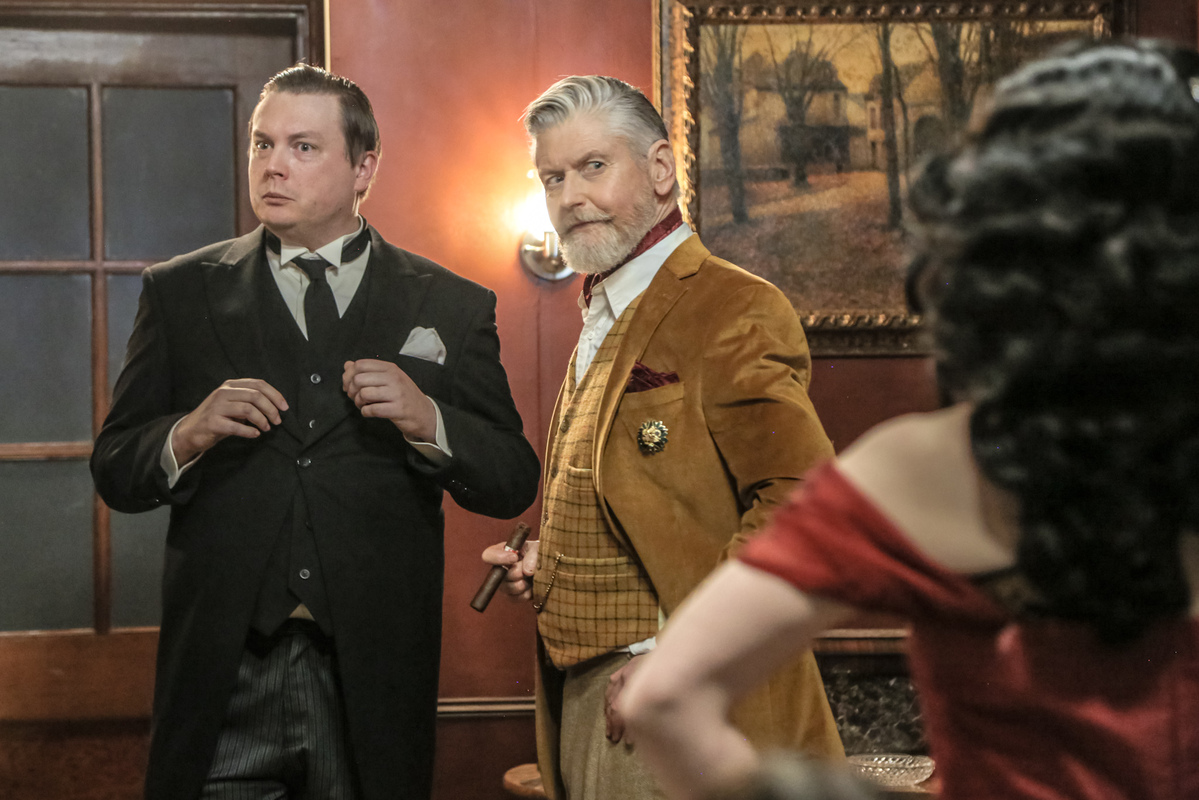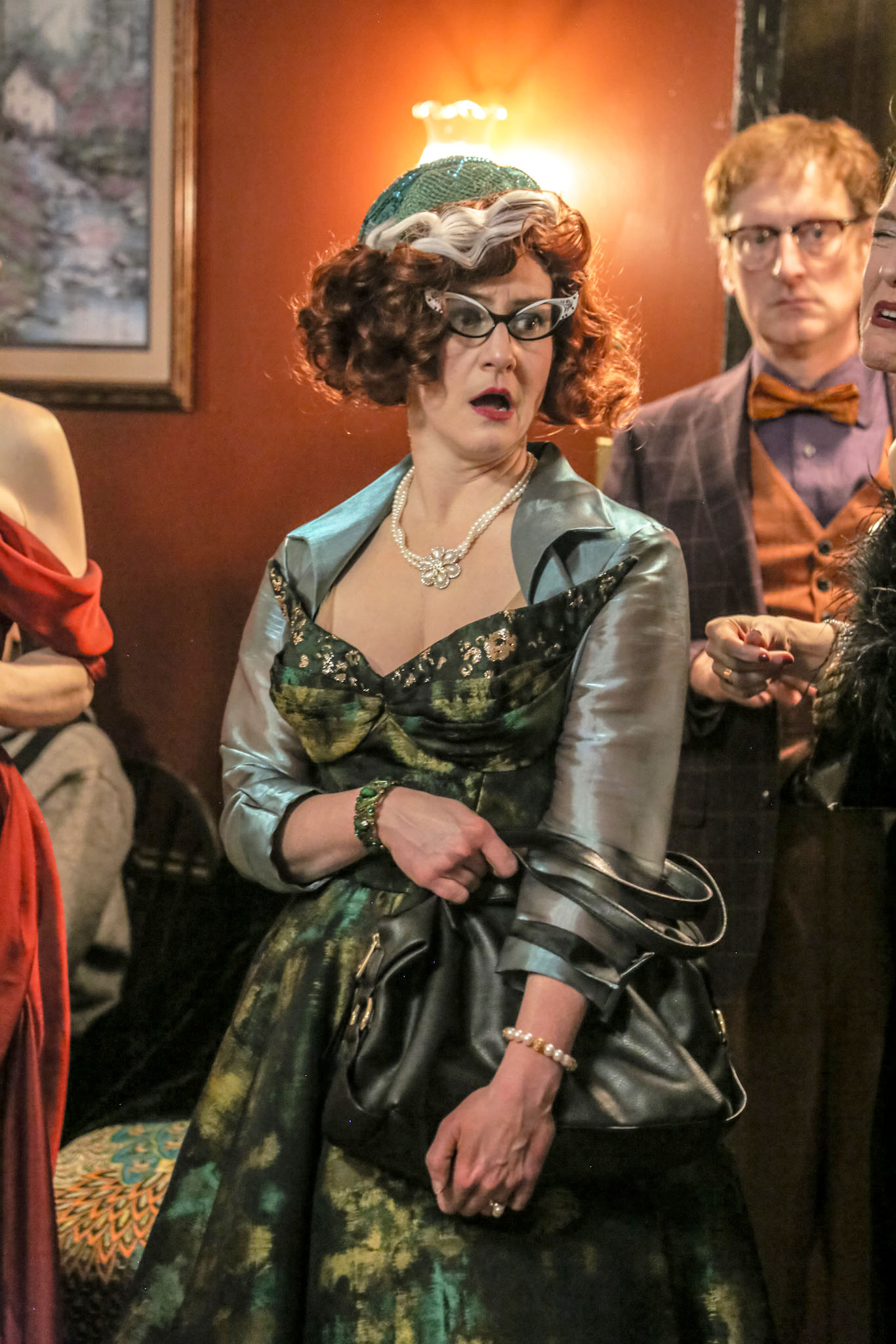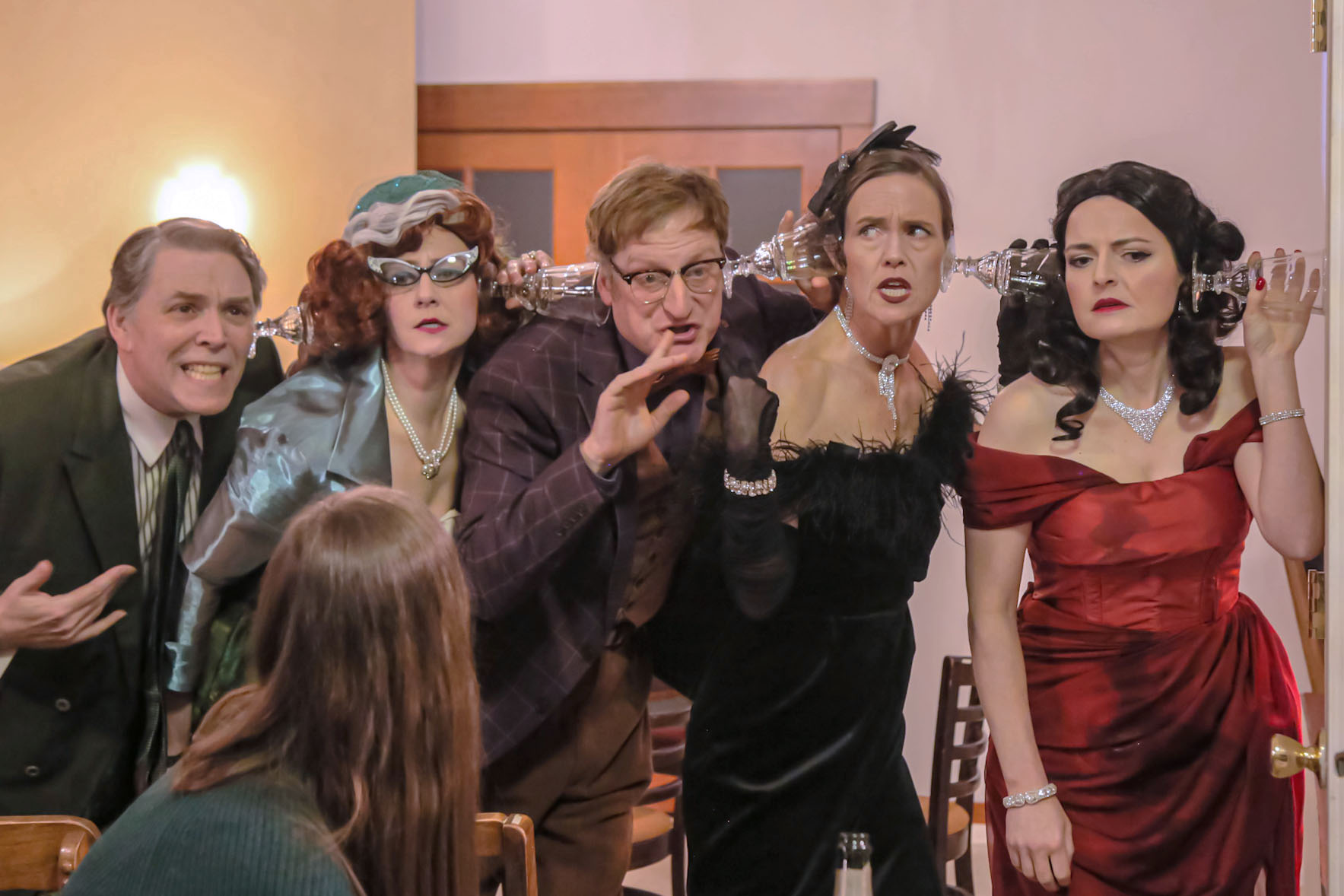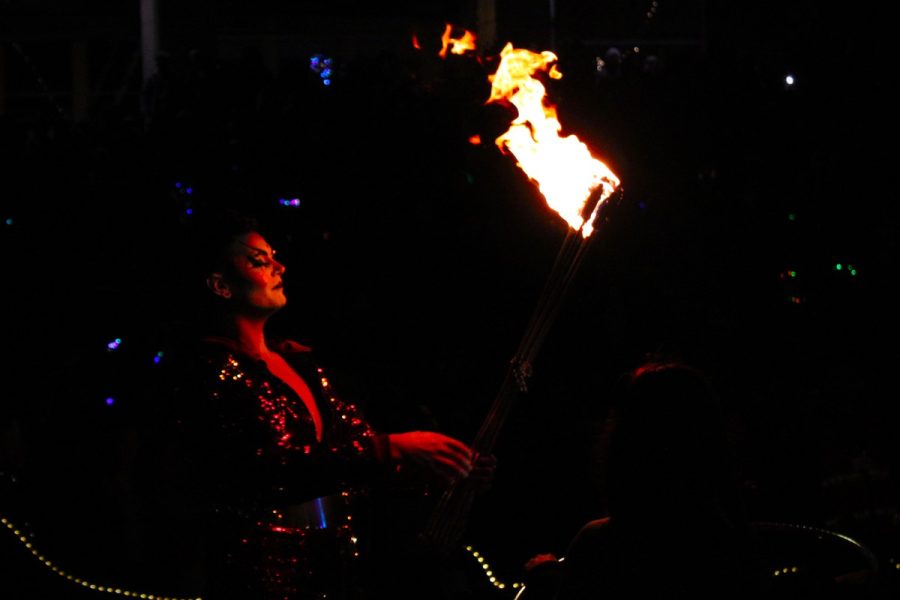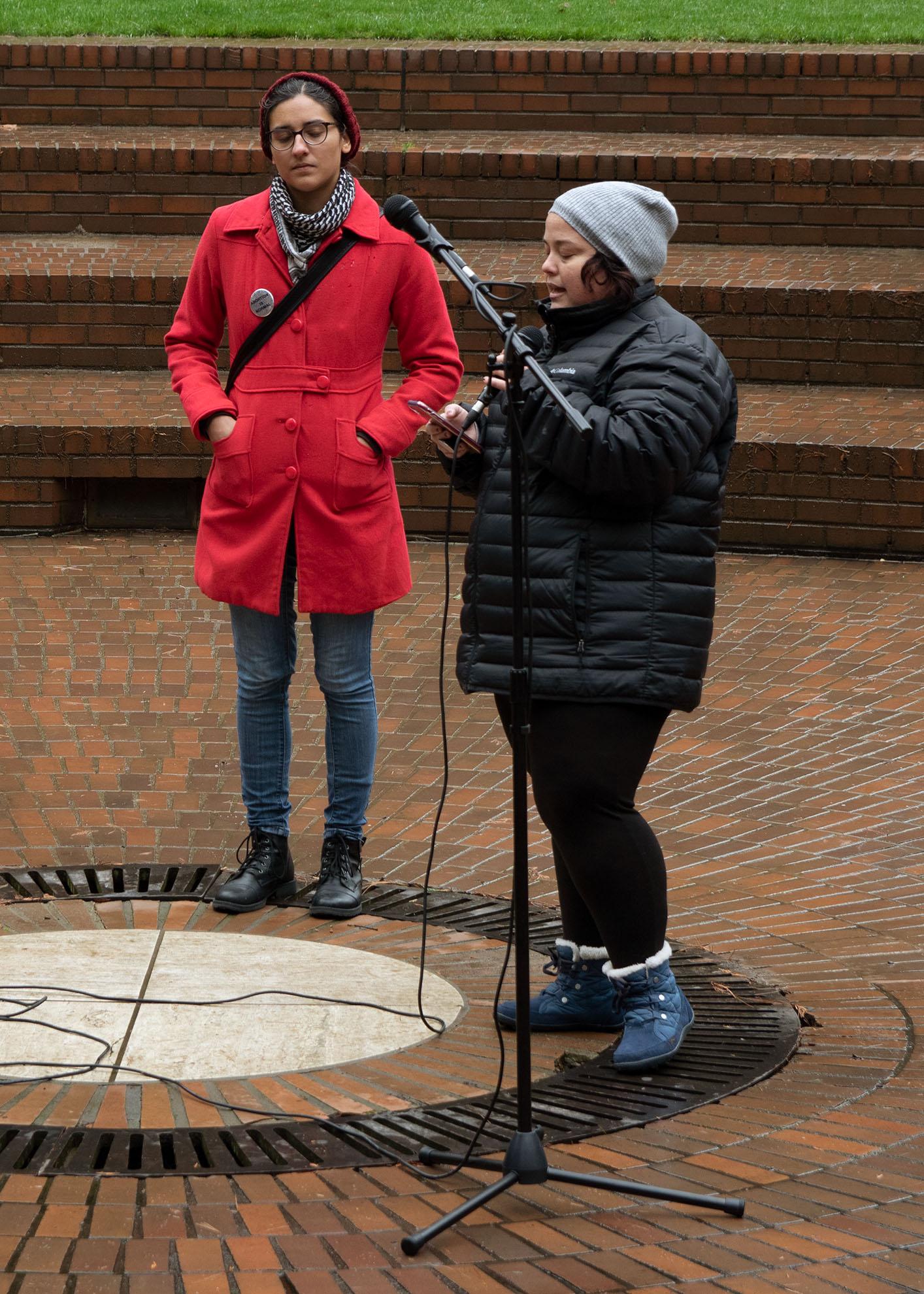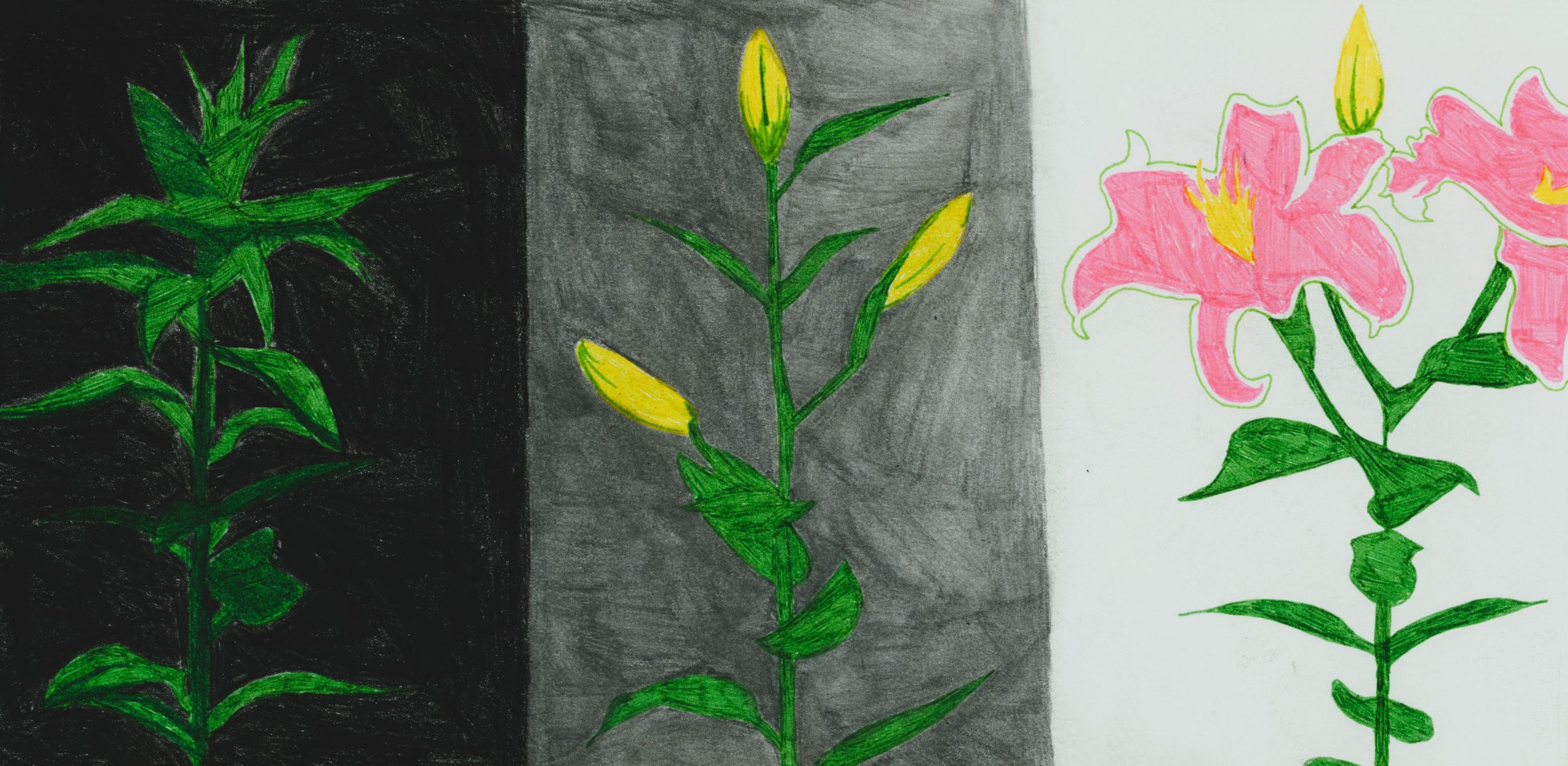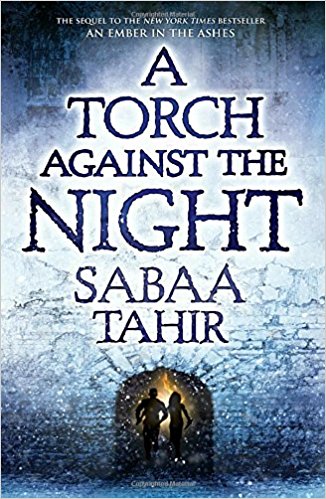Have you ever wanted to be a fly on the wall or a mouse in the corner for a theatrical conversation? Well, now you can be in Experience Theater Project’s new, uniquely designed murder mystery where you become an invisible part of the action as the clues unfold around you.
Clue is recognizable to most as a board game—it is also a book, movie and theater production. While each incorporates concepts from the other, they each have their unique twists. “I finally saw the movie, and I actually liked the play better than the movie,” said Meghan Daaboul, who plays Scarlet. “I thought the movie was a little silly. Not that the show isn’t silly, but just, especially how Scarlet, who I play, is portrayed better in the play than in the movie. She’s not really much of anything in the movie. And I love how she just has this take-charge, commanding presence.”
Scarlet was by far one of my favorite characters across all iterations of Clue, and Daaboul played her with the appropriate class and ease. It may be easy to see Scarlet as a slutty character, but in reality, she is strong and knows exactly who she is. Furthermore, she is not ashamed of who she is or what she does.


Scarlet’s portrayal differed from what Daaboul had in mind regarding aesthetics. Still, she slid into the assertive, shameless role with ease and apparent talent. “The way they dress, frankly, I feel more turn of the century than the 1950s,” Daaboul said. “So I just had to tell myself, okay, I’ll just bring out that other part of her, the alluring part of her. Hopefully, I do it just through my way of being and how I act as opposed to, in this case, how I look because it’s just a different Scarlet than I think I had envisioned. But I usually play the sexy, the smart, the calculated, those types of roles. As opposed to the girl next door. So Scarlet, as far as prep and stuff, was not too difficult for me to pull off.”
While Daaboul was very talented, each of her co-stars met her talent with their own. Laurence Cox, who plays the even-keeled Wadsworth the butler and another important character, will leave you guessing until the end. “It’s been really fun actually being able to play two very different characters because, not to spoil things too much, but I’m not necessarily playing who I’m saying I’m playing,” he said. Cox played both of his roles flawlessly.
Moreover, Ms. Peacock, played by Amber Green; Mrs. White, played by Caselle LaTourette; Colonel Mustard, played by Jeff Brisy; Professor Plum, played by Michael Bieker; Mr. Green, played by Darrell McGee; Yvette the maid, played by Annie Leonard; and all the supporting cast each brought their unique talent to their characters. Each of their performances was flawless and no one’s talent outshined the others, with each adapted to the immersive stage with apparent ease.
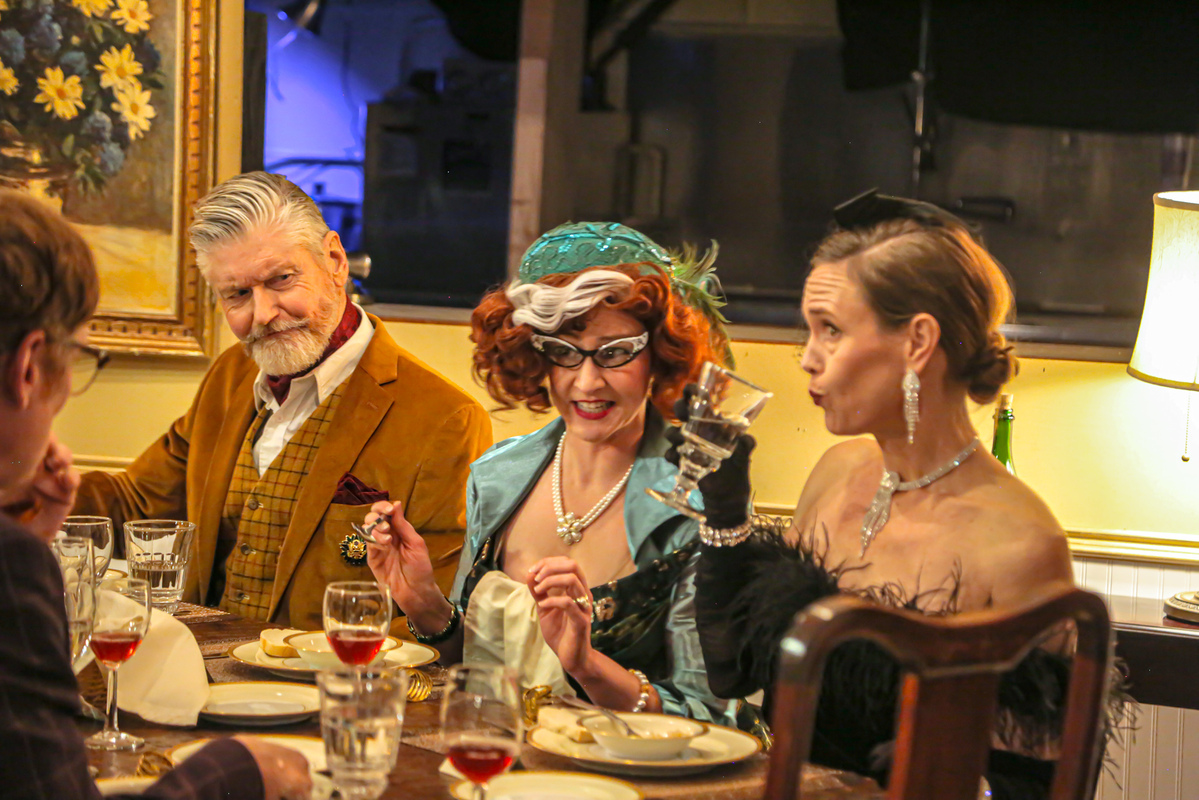
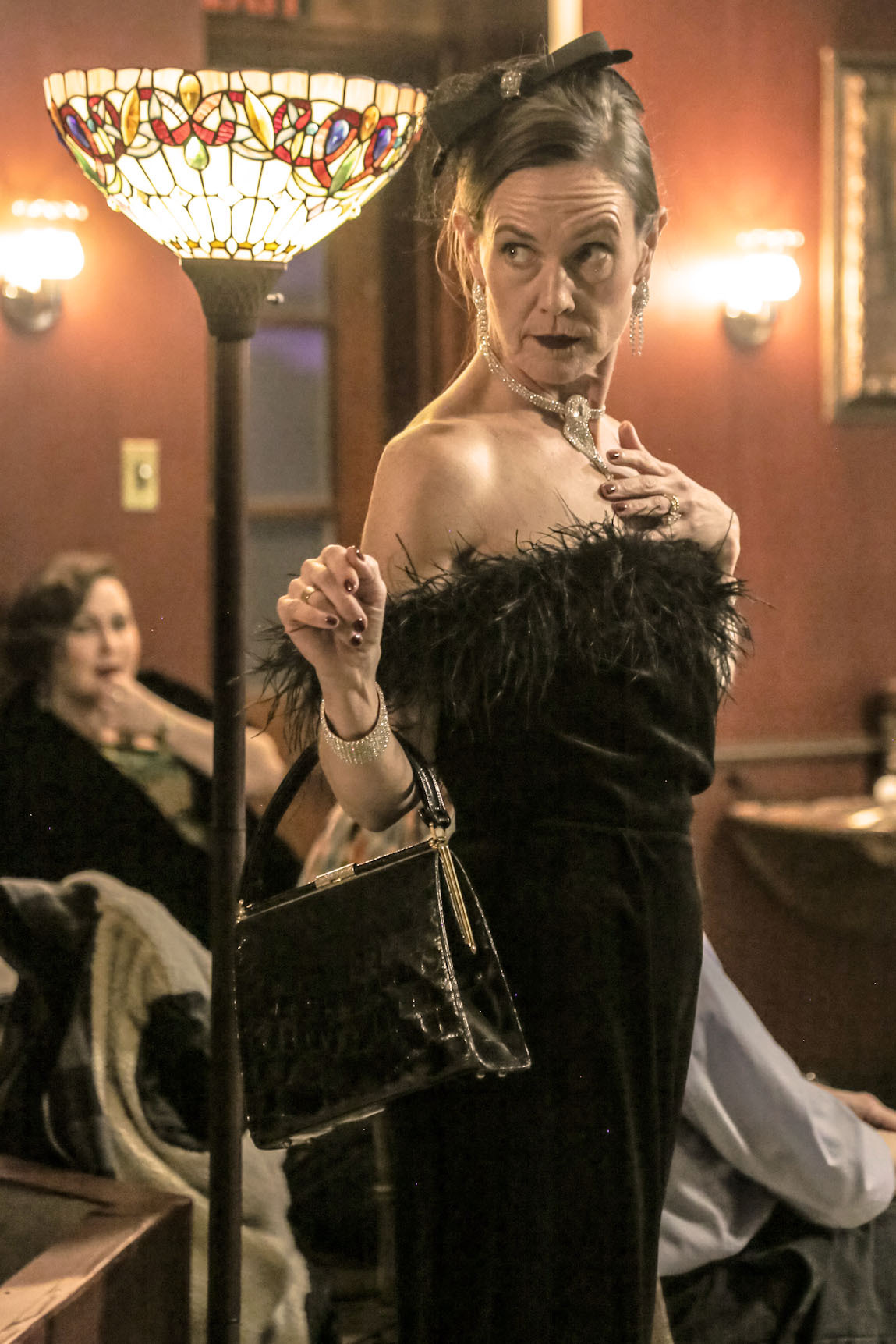
Very few performances require this level of adaptation from the actors when adjusting to a set. Most actors have ample distance between them and the audience. In this performance, the audience is on the set and an active participant in the action. “I think the hardest thing was getting out of the proscenium stage mindset, of always planting yourself in a certain position and sending what you are doing out into certain directions, and having to remember that there are people all around you that you’re playing to sometimes less than a foot away from you while you’re doing it,” Cox said. “Keeping that in mind the whole time while you are also working on getting all the lines down and remembering which room you’re supposed to go into, that was certainly a challenge at the beginning, but I think we’ve all risen to that pretty well.”
The interactive element increases the potential for a murder comedy show to become overdone, even though most murder comedy shows intend to be a bit cheesy. “My fear with the interactive piece was we were going to be doing just stupid stuff with the audience,” Daaboul said. “[However] it’s been nice to have those balances… It’s fun to play with the audience that way and have those interactive moments, but I appreciate that Alisa has made it to where we aren’t supposed to go super crazy.”
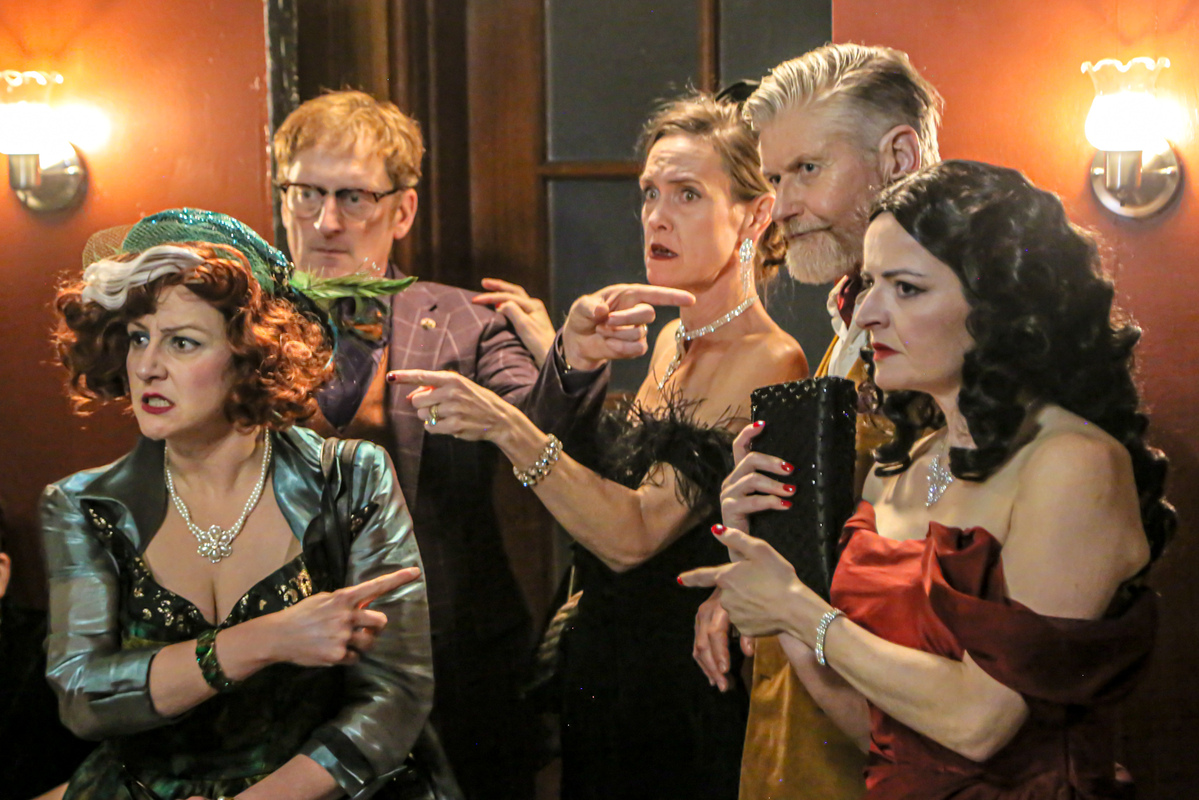
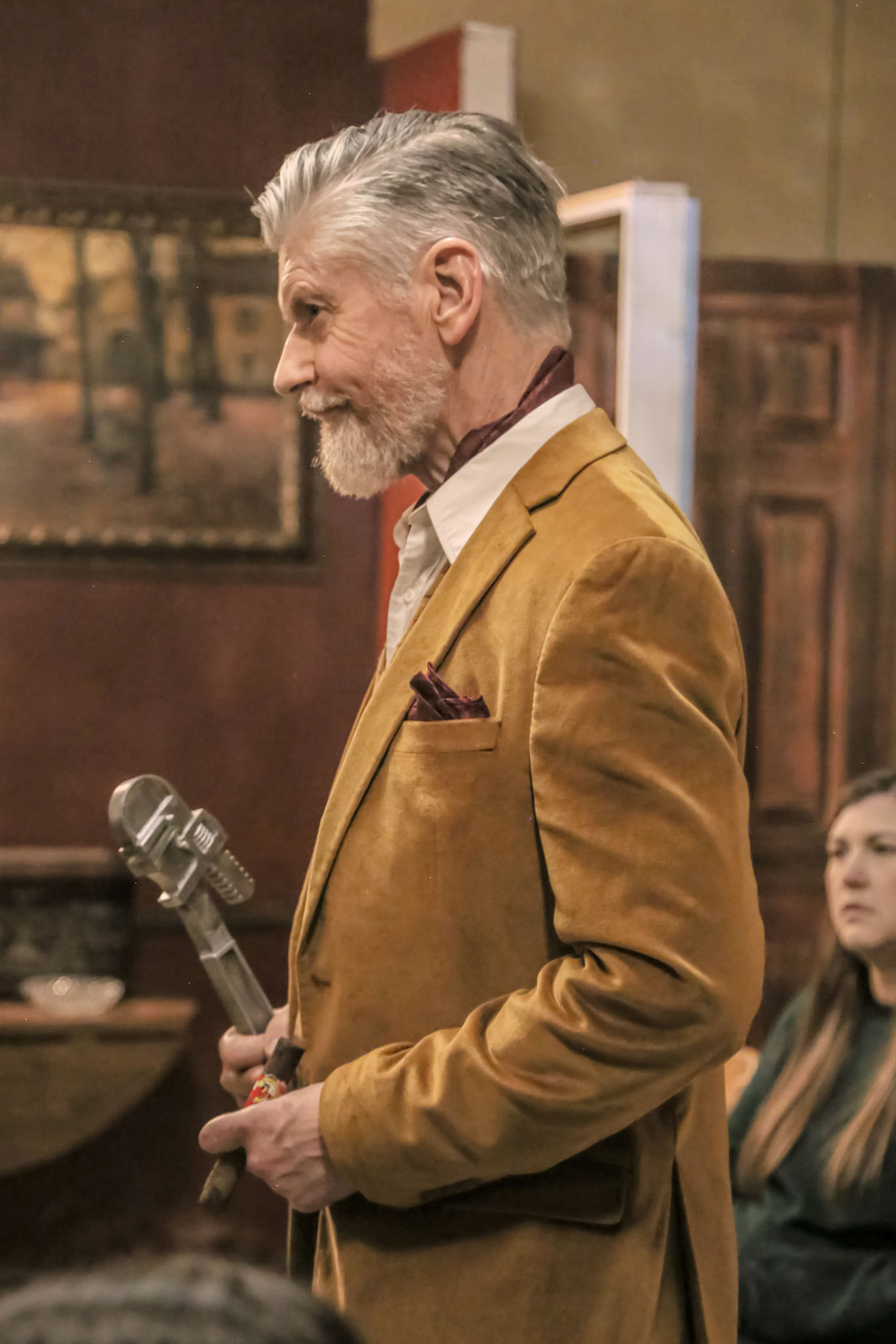
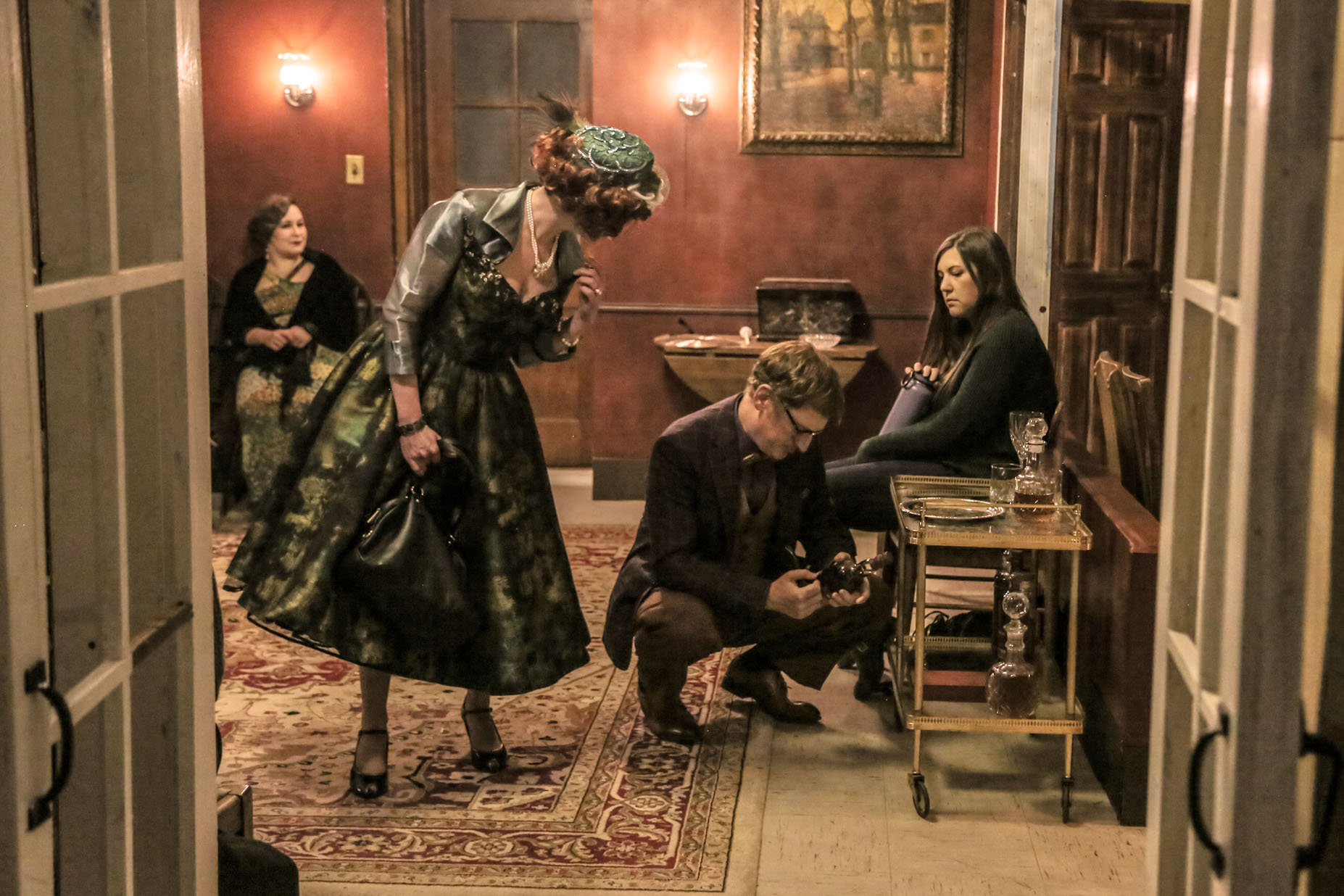
Changing this performance to include the audience on the set was a choice that seemed like a natural transition for this story. “The way they’ve written, the way they had to write the stage directions to make it work in a traditional stage environment, is so complicated,” Cox said. “It honestly just seems like it would be easier overall to run it the way that the experience is.”
Despite the interactive element simplifying the show, some difficulties and adaptations still needed to be made. Most notable was the line of sight issues that came up when the actors moved from room to room. “I think originally, the concept of having the half walls and making the rooms out, we were like yeah, that’s cool,” Daaboul said. “Then the doors popped up, and we’re like, oh, now we have these sight line issues… We hoped the audience embraces standing up or shifting around or whatnot.”
One could argue that the line of sight issues added to the experience. Being on the set feels like you’re invading a sacred place—in this show, that is precisely what they want you to do. Getting up and moving around allows one to feel greater ownership of the space. Additionally, sneaking around and trying to see and hear it all adds to the mystery. “Typically, it’s taboo to touch the set or be on the set or do anything other than look at the set,” Daaboul said. “So for some people, it’s adding that bit of, look at me, I’m special, I’m getting to do this taboo thing, and the murder mystery with the searching is perfect.”
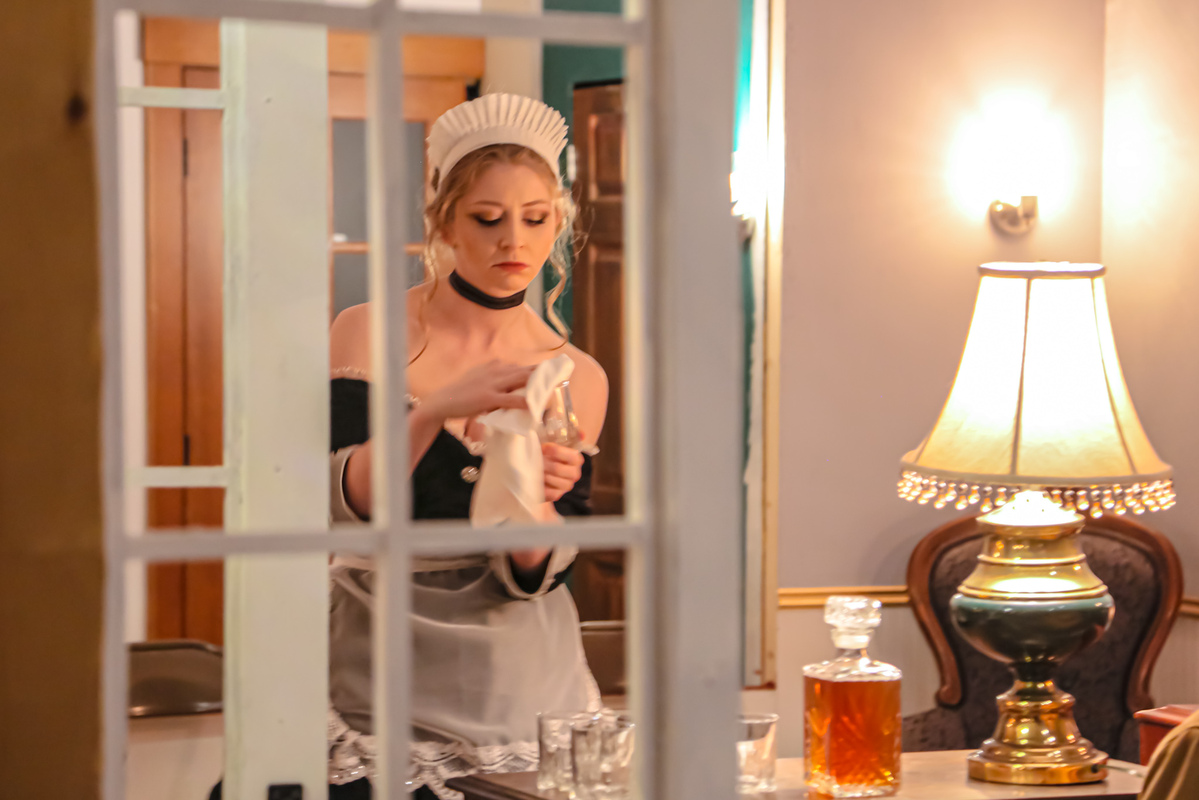
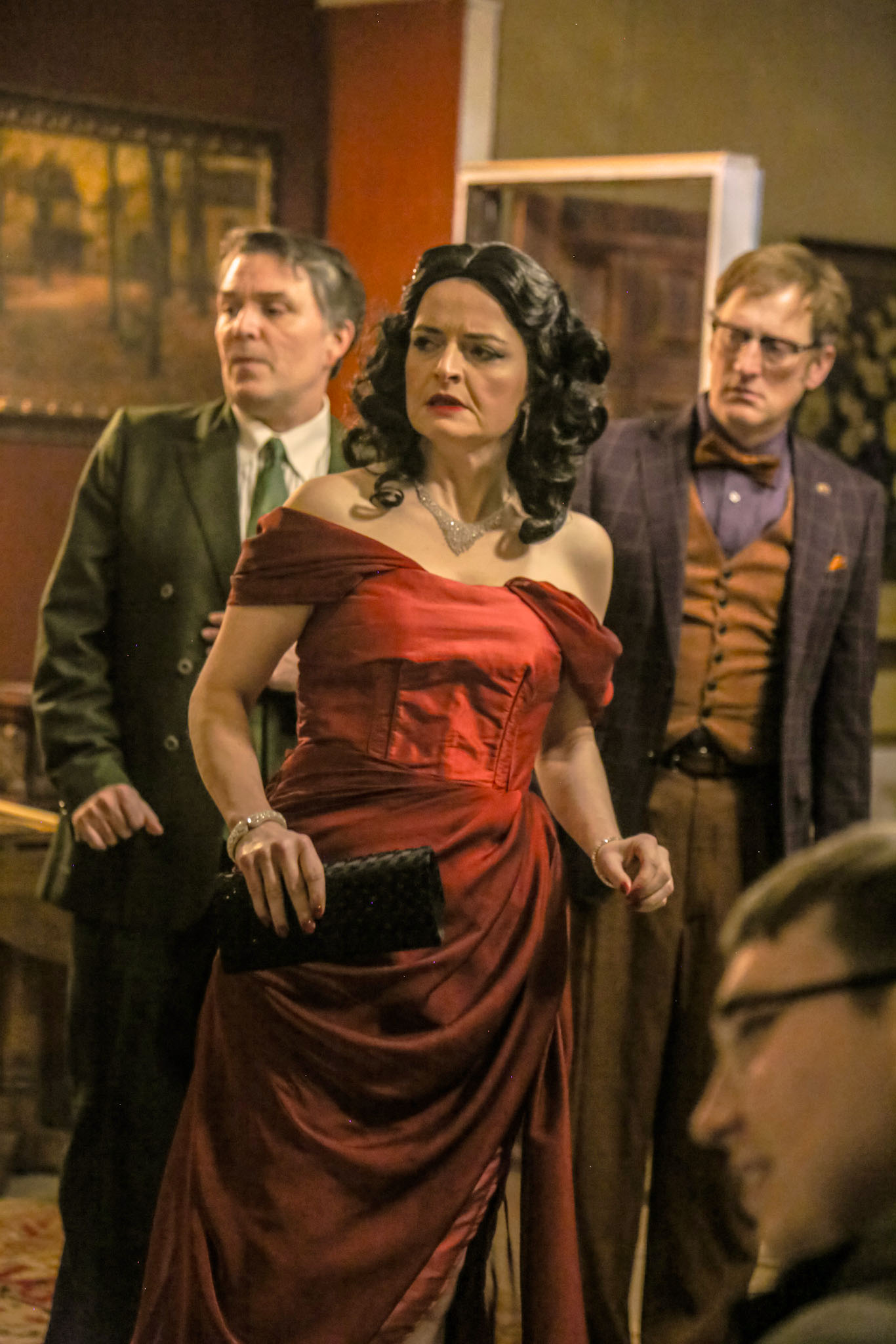
Easter eggs were also hidden all over the set. This enabled the audience to not only move freely around the set, but also encouraged interaction with props to find clues and win prizes. “I think particularly when you do give the audience the opportunity to move about in the performance space, the idea of there being little clues hidden here and there and bits of story that you can uncover that really is engaging,” Cox said.
It is so crucial in making art that we find new, nontraditional ways of telling. The act of experiencing art should encourage childlike wonder and community in new, fun and unique ways—ways that cater to audiences that might not be able to enjoy traditional theater in the same way. Clue: Onstage, told in this interactive manner, encourages disruption and creates something that can both be enjoyed by nontraditional audiences and learned from by traditional audiences.
“I hope they come away having had a really good, interesting and unusual time, that it makes them think differently about what theater can be,” Cox said. “That’s my main hope. It’s a very fun show being done a little unusually, and I think it’s all the better for it for sure.”
